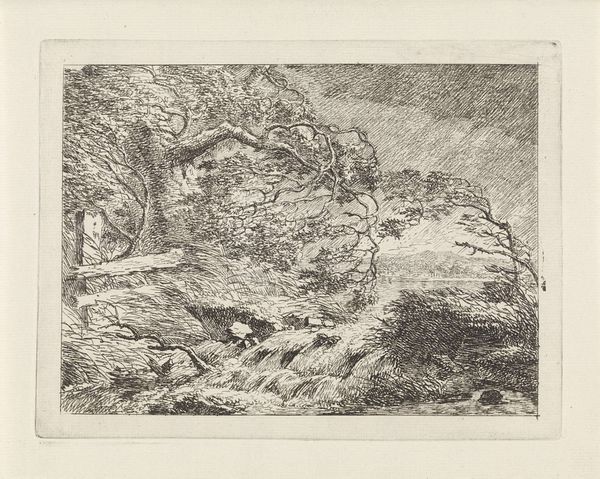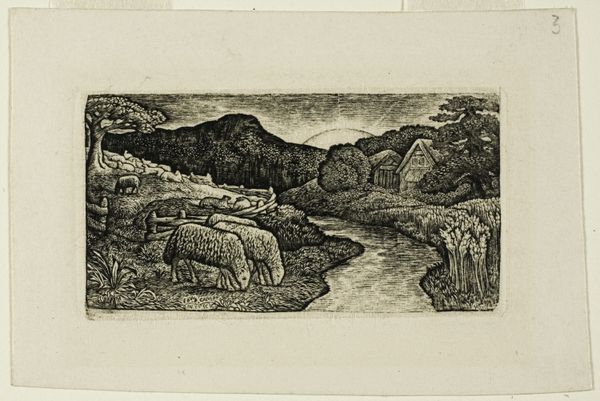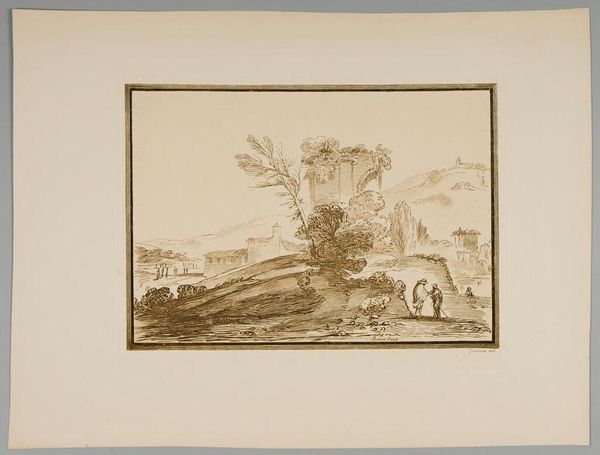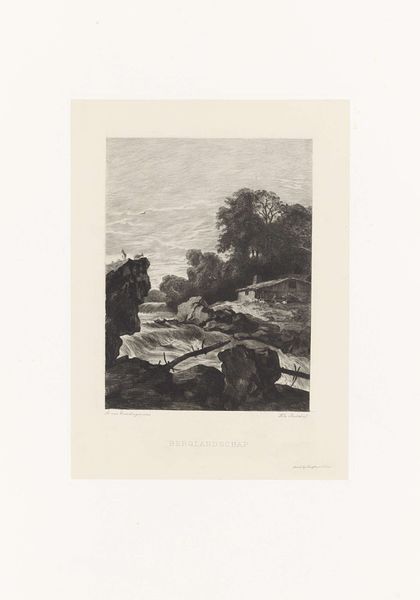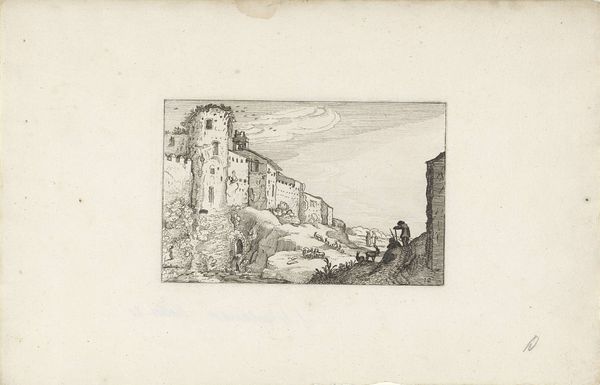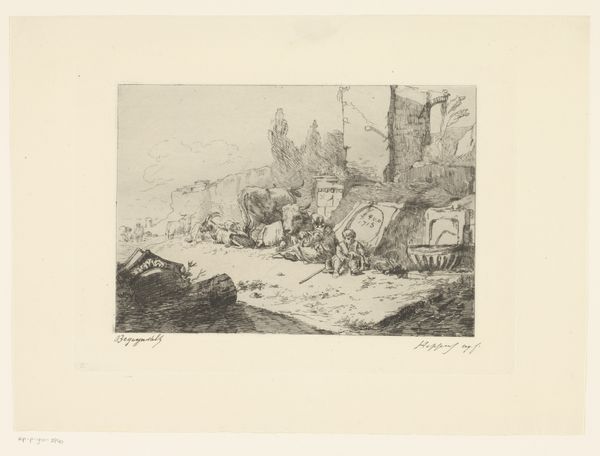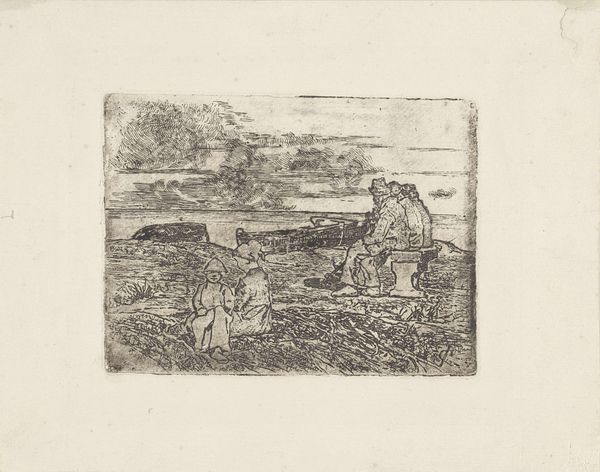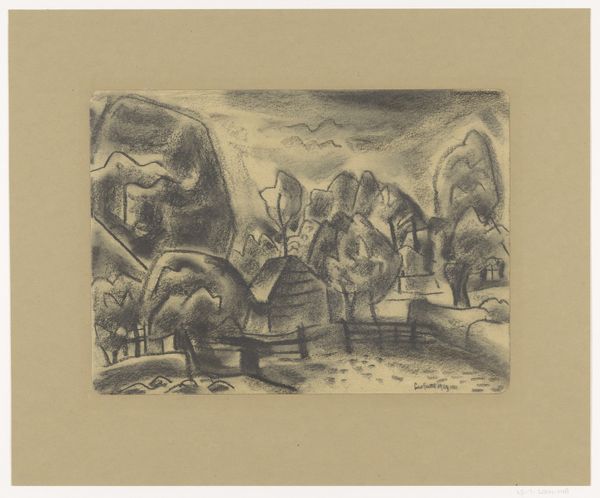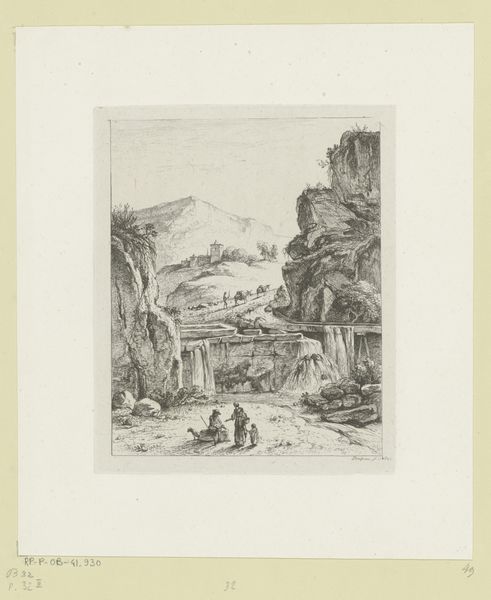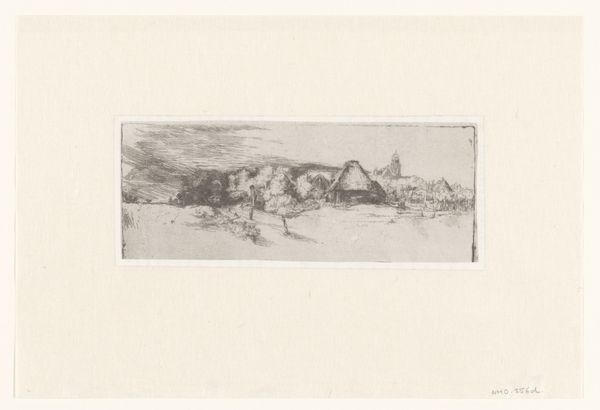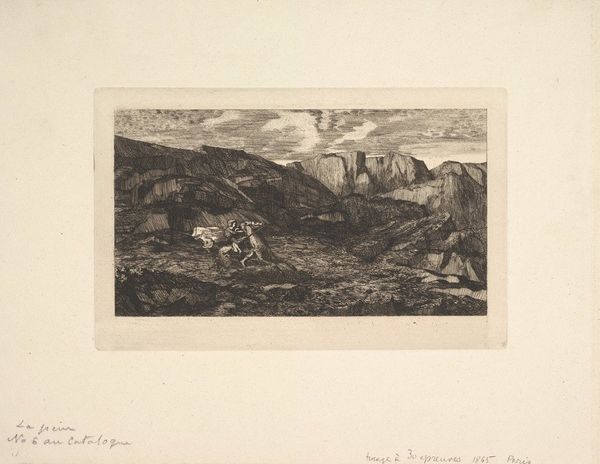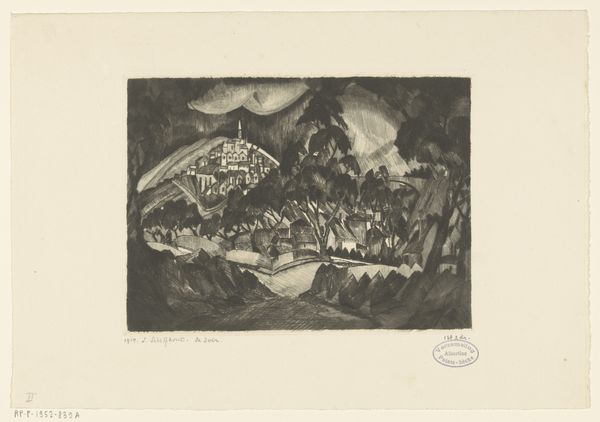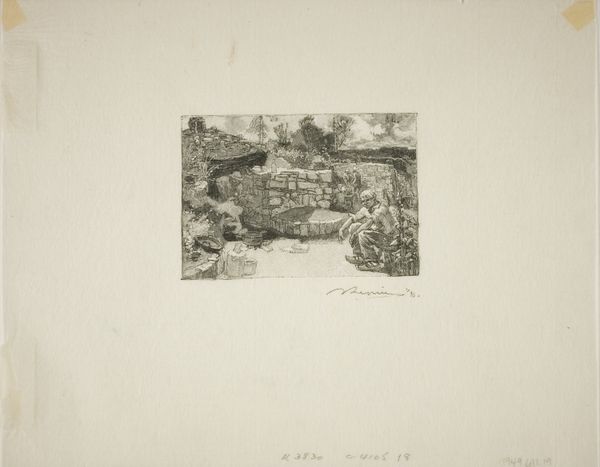
Dimensions: height 135 mm, width 210 mm
Copyright: Rijks Museum: Open Domain
Curator: Before us, we have Jacobus Ludovicus Cornet's print, "Ruine met watermolen," dating roughly between 1825 and 1882, a drawing and etching. It's currently held here at the Rijksmuseum. Editor: It's remarkably delicate. The intricate line work gives it an almost dreamlike, melancholic quality, as if recalling a memory. The detail in such a small piece is striking; notice the balance achieved by offsetting the heavy architecture with the fluidity of the water and natural forms. Curator: Indeed. Cornet was working within a historical context deeply invested in Romanticism. Note how the ruin itself evokes notions of the sublime, a confrontation with the power of nature and time’s relentless march. This fascination with ruins became quite prevalent throughout the 19th Century. Editor: Precisely. The ruin motif appears regularly. Focus here specifically on the construction; the composition is structured around a play of contrasts – decay versus persistence, man-made versus natural. The aqueduct, seemingly purposeless now, against the flowing water… a narrative in textures. The sharp details next to blurry ones suggest impermanence and change. Curator: The deliberate emphasis on architectural decay speaks volumes about 19th-century social concerns. Think of the rapid industrialization altering the Dutch landscape, the displacement of rural communities… Ruins became visual metaphors for anxieties surrounding societal transformations, symbols of the past encroached by progress. These etchings become preservation documents. Editor: An acute observation. In focusing solely on form, however, one may not directly gather this. We could observe instead how Cornet organizes value and textures, the effect that the artist aims for with light. His deliberate selection and refinement of the visible reality serves primarily as artistic creation; not political declaration. Curator: Perhaps a more nuanced perspective sees the work as both. The aesthetic impact is undeniable, but separating that from the cultural moment that birthed it seems artificially reductive. Editor: Fair enough. It would be a limiting, rather self-defeating gesture to detach these formal aspects from the historical sphere where they materialized. Curator: Thank you. My thoughts exactly. Editor: It seems clear now how Cornet’s aesthetic resonates across various layers. A compelling piece, truly.
Comments
No comments
Be the first to comment and join the conversation on the ultimate creative platform.
